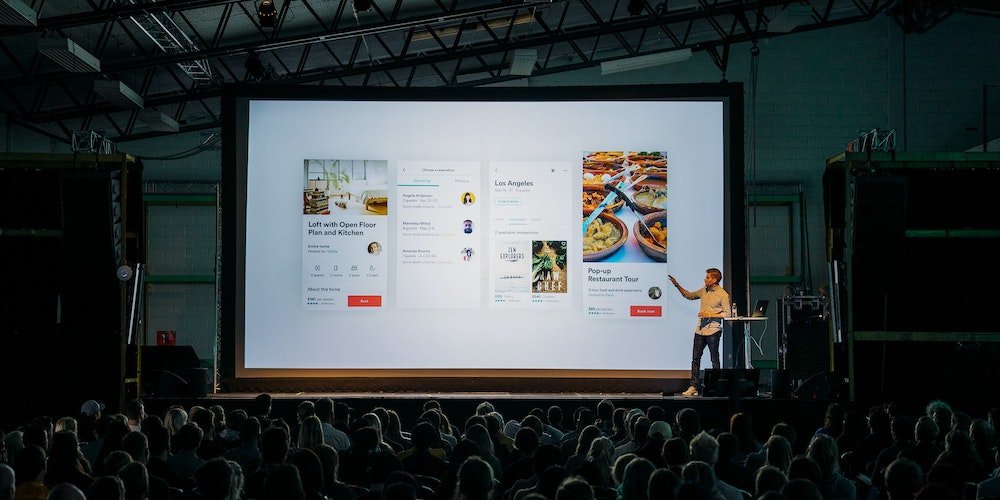How to Build Your First Deck
I remember when I started working on our very first pitch deck to show investors.
I had just finished business school. Before that, I was a private equity investor, and before that, I was an investment banker. So naturally the inclination was to build a very thorough business plan: my first pitch deck was 35 pages.
We had all this market analysis, a really, really extensive financial model, and outlined how we were going to hire, launch multiple lines of products, and conquer the planet. I couldn’t have been more wrong with that approach, but it took us a while to figure that out.
When we were a part of YC, the first thing they told us was not to worry about the deck—worry about our customers. So, one week, two weeks, a month, and finally two months passed, and we never worried about the deck, only the customers.
Sure enough, by the third month at YC, we had a good amount of traction, knowledge, and key market insights. That’s when YC told us we should now focus on our deck, because demo days were in two weeks.
Lessons from Our First Deck
I worked like hell to put together a deck those two weeks, and the first version was shit. But there were certain lessons I learned along the way.
1. Simplicity is powerful.
Simplicity and succinctness is powerful. The more brief you are with how you communicate anything, the more powerful it becomes. Why? Because we live in an age where you’re constantly inundated with information. VCs look at 1000 companies a year, so how are you going to stand out? How are you going to be in the top 1% of the top 10 companies that this VC looks at? How are they going to remember what you did?
2. Capture the audience’s attention.
The second thing I learned was that the deck should capture the audience's attention within the first 30 seconds. What are you going to say in the first 15-30 seconds that’s going to captivate the audience? It's very important that you say something different and come at it from a very unique and authoritative angle in those first two or three slides.
3. Decks don’t talk.
The third thing I learned is that decks don't talk, so when you're sending a deck to someone, you need to put yourself in their shoes and think about it from their perspective. They don't understand your business, they don't know who you are. You need to speak in layman's terms instead of using technical jargon—even if they’re an expert in FinTech or HealthTech. They read so much that they want to be able to digest information very quickly.
Your First Deck Template
With that in mind, I put together a brief, 13-page deck template that hopefully any early-stage founder can grab and make their own. There's a lot of these out there on the internet, but I wanted to make my own based on my experience and what I think works. It will give you a pretty solid starting point to get to where you need to be in order to get funding.
Below are my suggestions on how to use it:
Title Slide: In the first 15 seconds, you need to explain what your company does.
Problem: This should be ONE simple problem, followed up by a key insight (i.e. the middle class in Brazil doesn’t invest because they don’t trust financial institutions).
Solution: This is your product. It should clearly solve the ONE problem (i.e. Product X helps the middle class in Brazil invest by helping them see what their friends are investing in).
Why Now (optional): Only include this if there has been recent technology, customer behavioral, or regulatory changes, and there is something concrete that you can prove.
Team: The question that investors will have here is: Do you have the best team possible to solve this problem? Highlight previous related experience.
Traction: This could also be your team slide, it all depends on which is the strongest. If you don't have revenue, show user growth, if you don't have that, show your MVP, if not, show capital raised/accolades/press (though be careful with this).
Business Model: Show investors in a very simple way how you’re going to make money. Avoid showing multiple revenue streams, it’s disorienting.
Market: You need to show that you’re targeting a big ass market. You can use top down (ie, our TAM = $xx BN) or bottom up (ie, our target population is 10M x use product 1/mo x spend $10/mo = $1.2B).
Competition: Stick to the four quadrant competitive slide and show how you’re in the upper right quadrant. An example can be x axis = Innovative, y axis= cost, and you come off as the most innovative and cheapest solution in the market.
Financials + Key Metrics: Only show revenue if it's growing at 100%/year or 10% per month. If you’re pre-product and only have MVP, skip this slide. Popular non-revenue metrics include users, downloads, CLTV, revenue per customer, churn, etc.
Fundraising Amount: Include use of proceeds and milestones/goals for the next 18 months. Ideally this should tie to your KPI slide.
Thank You: Include a compelling statement on who you are again.
Appendix: Show the audience you anticipated their questions by leaving room for a Q&A; use the Appendix as a way to show that you both thought about those questions and have solid answers with supporting information.
Remember, investors are people and people love stories, so make yours compelling!
